#louis xvi desk
Explore tagged Tumblr posts
Text
Exquisite Louis XVI Roll Top Desk - French Bureau Du Roi
https://canonburyantiques.com/p/Louis-XVI-Desk-French-Bureau-Du-Roi-Roll-Top-1547807363/
#Louis XVI desk#French Bureau Du Roi#roll top desk#antique desk#18th-century furniture#French antiques#marquetry desk#gilt-bronze desk#luxury furniture#handcrafted desk
0 notes
Text
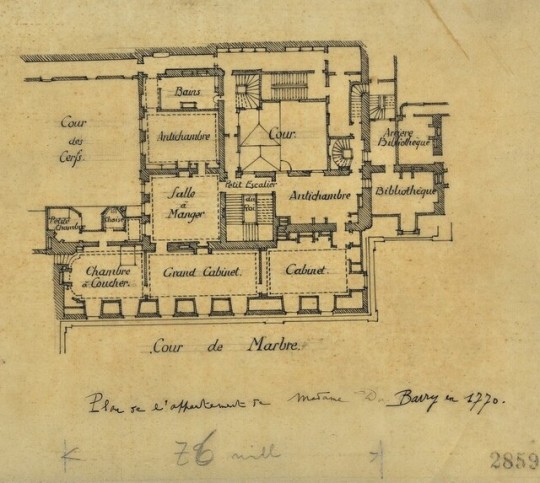
The plan for Madame du Barry's apartments in 1770. Note that she had both a chaise room (for toilet facilities) and a bain/bathroom for bathing. Du Barry's bathroom had running plumbing, a feature which Louis XV, who was known for being very strict when approving plumbing construction for bathrooms, denied to his own daughters before approving for his mistress.
Courtiers who lived at Versailles who had the space for dedicated bathrooms (which at the time were for bathing only, as bathrooms were meant to be luxury spaces, not somewhere you'd put your commode!) had to apply to the king for the construction of running plumbing.
Under Louis XV, running plumbing appeals from courtiers were rejected on the basis that he only intended to approve this type of construction for royal apartments due to the expense--except in the case of his mistresse. And he didn't always approve such requests for members of the royal family (ie, his daughters).
Under Louis XVI, approval for plumbing was notably looser. We know that the apartments of Marie Antoinette, Louis XVI, Madame Elisabeth, the comte and comtesse de Provence, the three daughters of Louis XV (Mesdames); the comte and comtesse d'Artois; and select courtiers, including the queen's favorites, the princesse de Lamballe and duchesse de Polignac, and apartments reserved for certain ministers had running plumbing. (Although Marie Antoinette's Versailles apartments did not have running plumbing until 1788-1789, and it's unknown if she ever ended up using them.)
For residents, royal or otherwise, without running plumbing but who had large enough apartments to allot dedicated bathrooms, tub bathing would have been done with tubs that were brought into these rooms and filled by servants. This is how Marie Antoinette bathed when she took immersion baths:
Campan:
... a slipper bath was rolled into her room, and her bathers brought everything that was necessary for the bath. The Queen bathed in a large gown of English flannel buttoned down to the bottom; its sleeves throughout, as well as the collar, were lined with linen.
For residents of Versailles who didn't have enough rooms for a dedicated bathroom, tubs were rolled into their regular room(s) and filled by servants.

For servants who had tiny apartments that were basically just small rooms often big enough for a bed, a desk and a drawer, they would have used wash basins for regular washing, as everyone (including aristocrats) did for daily hygiene.
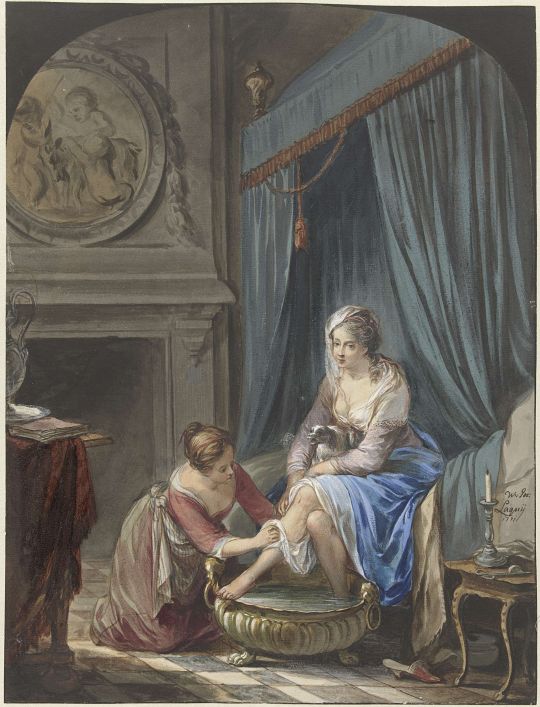
Image: A well-to-do woman being washed by a servant using a wash basin.
I don't think it would have been impossible for some servants to have had standing rolling tubs that they might have split among others, as people of modest means outside of Versailles would have done. But since documentation of 'lower servant' life at Versailles is limited, it's hard to say. They could have also gone to nearby rivers or lakes to bathe if they wanted full immersion baths. Louis XIV was known for bathing in rivers, especially after the hunt.
People, particularly aristocratic women who could afford specialized pieces like this, would have also used bidets to regularly clean their private parts.

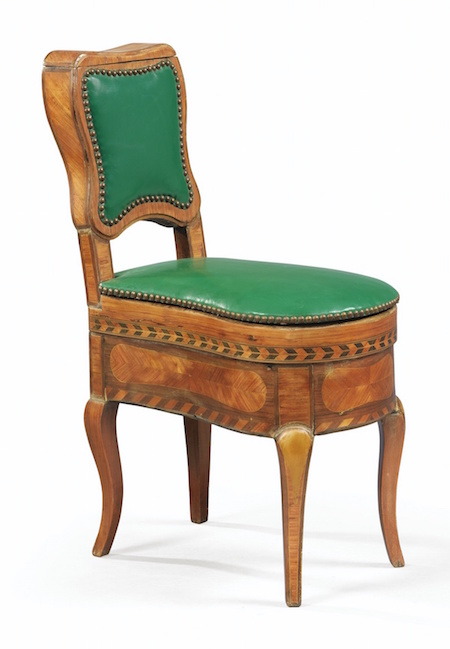
Oops I just meant to add the note about Du Barry getting running plumbing when Louis XV rejected his own daughters' requests for running plumbing, but have this other information too.
I am slowly working on a proper article about the myriad of popular culture myths about Versailles and hygiene, hopefully I will be able to sit down and force myself to finish it soon. Working on this particular article has definitely forced me to re-evaluate the general lack of solid historiography on the subject, even from historians that ought to be trusted to analyze and vet sources more seriously.
#versailles#french history#18th century#madame du barry#louis xvi by comparison was like#you get plumbing! you get plumbing! and you get plumbing!
183 notes
·
View notes
Text

Desk of Louis XVI in Versailles, France.
Louis XVI of Bourbon or Louis XVI of Bourbon, born in Versailles in 1754 and executed in Paris on January 21, 1793, was king of France.
6 notes
·
View notes
Text
so i was talking with my mom (a historian) about the afterlife and how historical figures having to share apartments would be hilarious. And then i brought up the frenchies, and what they would be doing after death.
I present to you, my mom's thoughts on the matter:
They would be running a spa. All of them. Lavoisier and his wife would be running the cafe (are there cafes at spas??? I don't know??? I was too busy dying inside to ask). Fouche runs finances. Robespierre does hairdressing stuff and danton does pedicures. Herault would be the (female?) waitress and fabre is the apothecary?? I guess? (I think my mom meant he runs the front desk) Louis XVI would be the janitor and marie Antoinette takes care of pets.
And i vetoed charlotte corday to ever be there. That was all i got to say.
And napoleon is just there to help
#If i had to hear my mom explain to me this in graphic detail#You must read this cursedness so I don't suffer alone#Marat was also here somewhere but i spared him the suffering he deserves a day at the spa not to work at one#Anyways time to tag all these frenchies#I'm sure they won't haunt my ass for this sacrilege#Lavoiser#joseph fouche#maximilien robespierre#Danton#hérault de sechelles#Fabre d'Eglantine#Louis XVI#marie antoinette#Napoleon#No i won't tag corday cause fuck her that's why#I'm sorry for inflicting this upon you all I wanted was to talk with my mom about quevedo and gongora having to share a flat but alas
21 notes
·
View notes
Text

A fine quality 1940s French Ebonised Desk in the Louis XVI Taste
0 notes
Text
Fretfully aching to feel fit as a fiddle
After experiencing a severe, albeit violent near lethal bout
of irritable bowel syndrome (yesterday night August 30th, 2023)
triggered courtesy dulcolax caplets plus
healthy portion of lentils, I (a beatle browed, foo fighting,
night ranger needing nirvana)
imperiled me to twist and shout as a whirling dervish analogous
to F5 tornado bread a deep purple to kiss earth, wind and fire hopscotching across terrestrial plain.
Irritable bowel syndrome
in my pinion wracked
lower abdominal area (mine) bubbled, gurgled and ballooned
sub stomach gastrointestinal tract
vis a vis flatulence crooned in tandem with subsequent expulsion
explosively eliminated fecal waste witnessed this scribe forcibly
zipping, sprinting, jetting to bathroom,
self propulsion (a race against time)
nsync with contraction of sphincter muscles'
spasmodically, desperately braced
body electric of mine hurled
at light speed across the universe
courtesy unpleasant symptoms
that mimicked anxiety/ panic attack,
which tortuousness, odorousness, insidiousness,
horrendousness, gaseousness, arduousness... played mean game of (gastrointestinal
knick knack paddywhack havoc.
Ofttimes in the past
irritable bowel syndrome
affrighted, afflicted, and affected me,
hence yours truly no stranger
to making light of offal plight and even managing to craft poem
else my alias not mister rhyme stir,
who found himself held hostage self barricaded in the water closet, where thoughts about mooning
did not crack a smile,
more explicitly baring derriere
tubby more exact humor did little to cheer me up -
matter of fact
no source of laughter manifested, (despite usual presence of chuckles
from this fan of good humor) hijacked for what seemed a maternity leave
from all mothers tub be
thus envision, a bevy of pregnant gals
aching with cramps heave
ving (times square of the hippopotamus)
with cervix fully dilated key
ping alert, when mother nature ready
to pull out all stops (via umbilical cord) to deliver bundle of joy followed
in quick succession with after birth re:
placental sack, hence
said effort to expel newborn
the closest scenario
experienced ill suited
to Saint Vitus dance afflicting this anxiety prone
lovely bones, an all expense paid (seat of the pants)
accursed bane of proletariat grants no truce to attend
found me pampered doubled over stance.
Modus operandi to distract against acute pain crisis yielded impossible mission
exhibited courtesy haphazard poem
awaiting unsolicited feedback across rock of ages woke beguiling ghostly busty spectre courtesy Marie-Antoinette, (i.e. bride of France's arty choke King Louis XVI) bespoke
let him eat cake, and (sic) send back the bloody bloke,
aye suddenly begot idea rye Jack Corner of zee desk didst impale and provoke moderately painful injury right side rib cage
analogous to intriguing unfortunate circumstance mysterious secret shrouded
as dagger and cloak
(think Alfred E. Neuman, viz MAD Magazine), yes no joke
lovely bones of me body electric,
(particularly right side rib cage)
severely traumatized, nailed, injured...
crucified oft told umteen times,
yet omitting key mirrors and smoke,
significant Dorian Gray parallel,
when former antique,
viz secrétaire looking glass reflection, spider hairline fractures radiated
resembled bay of pigs in a poke
ham handedly oinked, quaked, shattered... broke
into bajillion pieces deafening, exploding, glowering thunder stroke jagged shrapnel size shards
unleashed cosmic force
lacerated, gnashed, beribboned...
impeaching flesh with one engulfed masterstroke,
no rhyme nor reason aiming to choke
off promising poet (ha) of corpse
resembling scrambled egg yolk posthumous fame besmoke
salvaged mine besmirched reputation courtesy humble cartoon character
bugs bunny and kinfolk spoke
daffy fully goofily
eulogizing humor did evoke.
0 notes
Photo

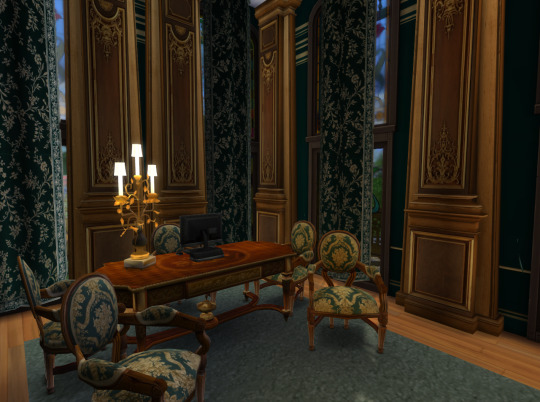
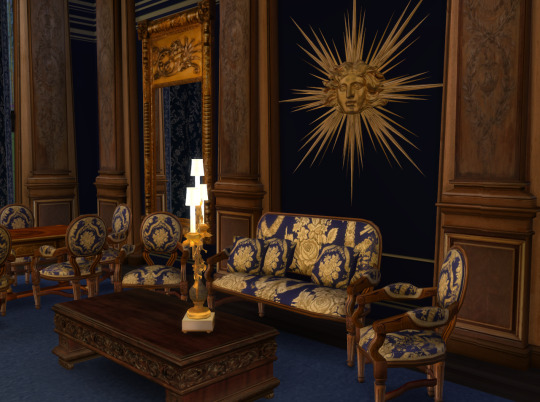

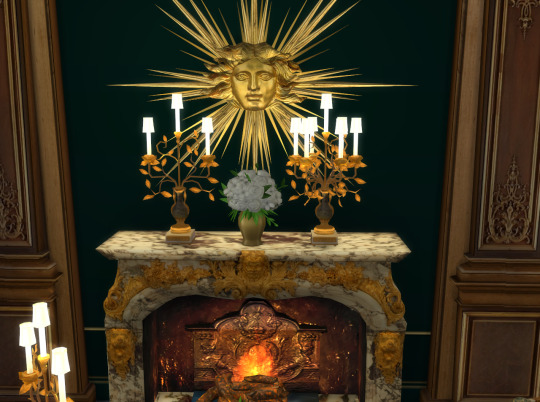
Some of the picturesof the Sun King Set ❤️ ❤️ ❤️
https://annaquinnstories.blogspot.com/
#thesims4cc#thesims4mods#thesims4#louis xvi#set#livingroom#dinningroom#desk#tablr#fireplace#loveseat#armchair#chair#candelabra
26 notes
·
View notes
Text

Desk Louis XVI. A furniture serie.
#desk#louis xvi#little girl#niña#petite fille#fille#girl#writing#reading#art#artist#graphite art#graphite#grafito#graphite drawing#drawing#dibujo#dessin#draw#traditional art#dibujo a mano#dibujo a lapiz#lapiz grafito#graphite artist
4 notes
·
View notes
Photo

A Louis XV-style blue-ground Parisian varnish secretaire en pent by Pierre IV Migeon (1696-1758)
40 notes
·
View notes
Text
French Louis XVI Bureau Plat Desk - Elegant Writing Table
The timeless elegance of the French Louis XVI Bureau Plat Desk. Perfect for adding a touch of sophistication to your workspace with its classic design and fine craftsmanship.
Buy Now: https://shorturl.at/TNWOi
The French Louis XVI Bureau Plat Desk is a masterpiece of elegance and craftsmanship. This writing table features intricate detailing and a classic design that exudes sophistication. Perfect for any refined workspace, it combines functionality with timeless beauty. The high-quality materials and expert construction ensure it will be a cherished piece for years to come. Add a touch of French elegance to your home or office with this exquisite desk.

#French Bureau Plat Desk#Louis XVI Desk#Writing Table#Antique Desk#Canonbury Antiques#Classic Furniture#Elegant Desk#Vintage Writing Table#High-Quality Antiques#French Furniture
0 notes
Photo




S&V_Recreate history_Louis XVI Style Flat Desk Lacquered in Celadon
Mesh and textures all created by S&V.
HQ textures.
All pictures are actual screenshots of the game.(Except reality photos)
Do not re-edit ,recolor or re-upload to other sites.
DOWNLOAD @ Patreon
Thanks for all the supports!
#viviansims#S&V#louis xvi#TS4#the sims 4 cc#the sims 4#ts4 classical furniture#ts4 desk#TS4 Recreate history
560 notes
·
View notes
Text


Petit Trianon, Louis XVI’s Cabinet.
50 notes
·
View notes
Photo







Louis XVI Set
Here we are ! This new set contains 6 new CC (all made from scratch) inspired by precious pieces of furniture designed by famous cabinetmaker as Riesener or Carlin.
So it includes :
- 1 Jewel Cabinet
- 1 Sideboard (console) which is the lower part of the Jewel Cabinet
- 1 Drop Front desk (2 swatches)
- 1 Writing desk (Bonheur du Jour) (2 swatches)
- 1 dining table
- 1 desk (2 swatches)
Download HERE
Thanks for your kind words :)
422 notes
·
View notes
Photo



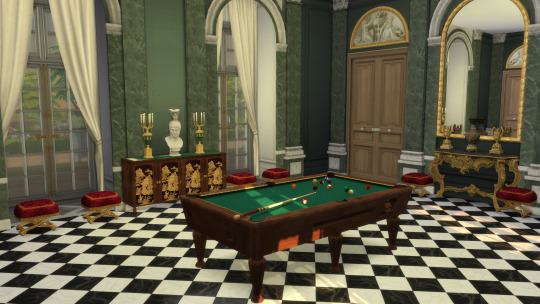
- Louis XVI Furniture -
I was working on a version of Chateau de Chantilly and realized i needed some new Louis XVI style furniture, and one thing led to another. But here you go, a mixed bag of Louis XVI style furniture.
Note: If you download Mio’s mesh you only need to download the package once, as it’s a merged package a few different meshes.
If you have any questions or problems just pm me and ill get back to you asap! Enjoy!!
- Download under the cut -
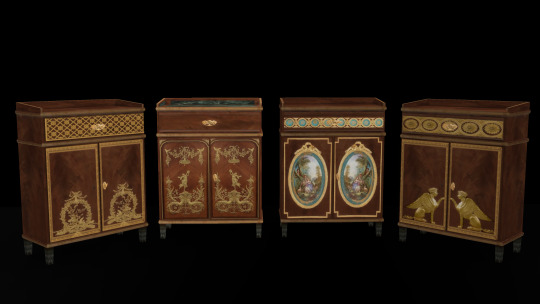
Louis XVI End Table
Mesh by: Mio
Link: (X)
Swatches: 6
Price: 2000
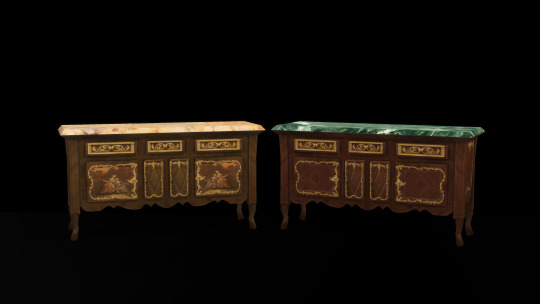
Louis XVI Chest of Drawers
Mesh by: EA, Basegame
Swatches 10
Price: 6000
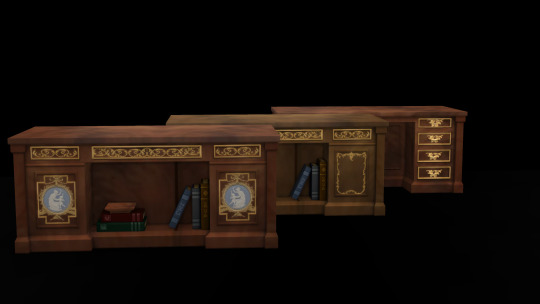
Louis XVI Desk
Mesh by: EA, Basegame
Swatches 6
Price: 7500
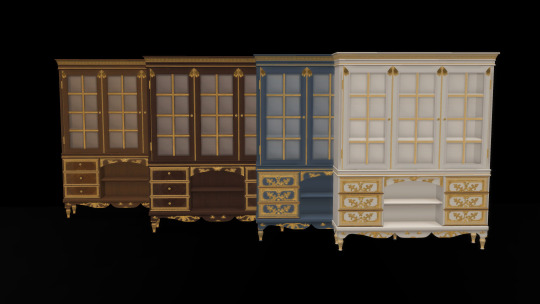
Louis XVI China Cabinet
Mesh by: SIMcredibledesigns
Link: (X)
Swatches: 8
Price: 6700
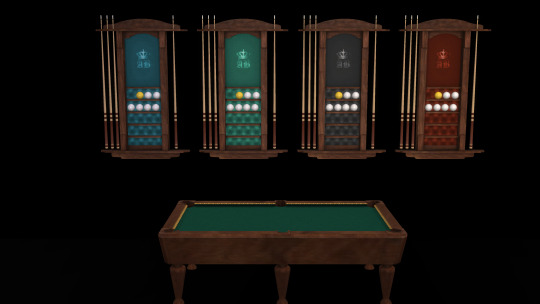
Louis XVI Billiard Table & Wall Stand
Mesh by: Severinka
Link: (X)
Swatches: 12
Price: 2100

Louis XVI Chess Table
Mesh by: @thejim07
Link: (X)
Swatches: 2
Price: 450

Louis XVI Firescreen
Mesh by: @thejim07
Link: (X)
Swatches: 14
Price: 350
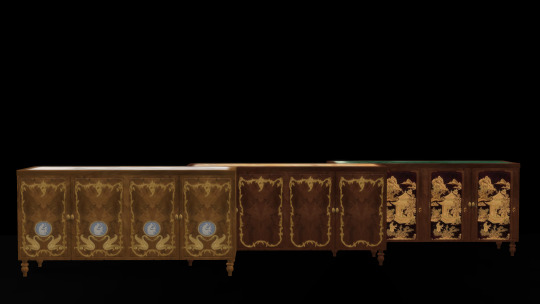
Louis XVI Side Cabinet
Mesh by: Mio
Link: (X)
Swatches: 9
Price: 5900
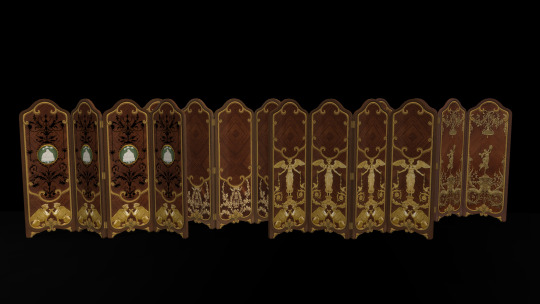
Louis XVI Divider
Mesh by: @thejim07
Link: (X)
Swatches: 21
Price: 450

DOWNLOAD
Support TheMarbleMortal on Patreon
#TS4#ts4cc#the sims 4#the sims community#ts4 maxis cc#maxis mix#sims 4 maxis cc#ts4cc maxis match#thesims4history#ts4 historical#sims historical#history#louisxvi#furniture#thesims4cc#thesims4#the sims 4 custom content#the sims royalty#ts4 royalty#ts4 royal cc#the sims 4 royal simblr#thejim07
273 notes
·
View notes

